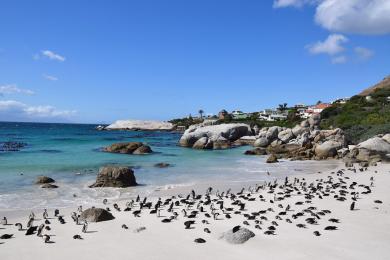Overview
Cow sharks are distinct from other shark families due to their six gill slits. They are characterized by their stout, eel-like bodies, with a blunt head and a short, rounded snout. Their coloration is typically gray to brown, with a lighter underside. Cow sharks are distinguished from other similar species, such as the bluntnose sixgill shark, by their larger size, reaching up to 4 meters in length, and their more prominent dorsal fin.
Commonly found in:
- Australia
- South Africa
- New Zealand
- Japan
- Chile
- Portugal
- Spain
- Morocco
- Namibia
- Mozambique
- Madagascar
- Brazil
- Uruguay
- Argentina
- United States
Over the past 10 years, there has been 1 recorded cow shark attack. The attack occurred at the following location:
Size and Weight
- Size: Males average between 7-9 feet when mature; females average between 8-10 feet when mature
- Weight: Males typically weigh 200-300 pounds; females typically weigh 300-400 pounds
- Swimming speed: Both sexes swim at speeds of 2-3 mph
Interaction with Humans
- Interaction with Humans: Rarely encountered, generally not aggressive
- Avoidance: Stay out of deep waters, especially at night
- Activity: Mostly active at night and in deep waters
Lifespan and Diet
- Lifespan: Males live approximately 20-25 years; females live approximately 25-30 years
- Diet: Fish, squid, and other sharks; ambush predator that relies on surprise attacks
Migratory Patterns
Cow sharks, including species like the Broadnose Sevengill Shark, generally do not exhibit long-distance migratory patterns. They tend to remain in specific coastal areas year-round, moving between deeper and shallower waters seasonally. Some populations may undertake short-distance movements along coastlines, but these are not considered true migrations. For example, Broadnose Sevengill Sharks in California waters move between San Francisco Bay in summer and deeper offshore waters in winter.


